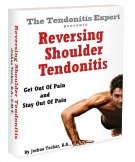Shoulder Subluxation
Just Out A Bit
What is a Shoulder Subluxation?
Technically, 'Subluxation' means a partial dislocation, and a 'Luxation' is a full dislocation.
Realistically though, a subluxation of the shoulder joint is different than a disclocated shoulder.
A full dislocation bascially means that the shoulder joint comes apart, separates, whereas a subluxation just means it's not seated correctly, is just 'off' a little bit.
Shoulder Subluxation
You're Just A Little Off......
The shoulder joint is designed to provide a large range of motion in a variety of directions.
The knee joint, for instance, swings only one direction, back and forth.
The shoulder joint allows the humerous bone to not only swing and swivel almost 360 degrees in a variety of directions, but also allows for the bone to rotate, like when you turn your hand palm up and then palm down.
This joint also has strong support and can deliver a lot of lift and leverage.
While there is great benefit to this range, this also sets us up for shoulder Tendonitis problems.
The Shoulder Joint
The ball of the humerus bone is held against the socket of the glenohumoral joint. This is the 'ball and socket' of the shoulder.
Ligaments, cartilage, and muscles/tendons hold the bones together and move them, and stabilize them, and stabilize them as they move them.
And they do this while holding the bones/joint in a certain alignment.
For a variety of reasons, the bones can get moved out of alignment.
The main reasons are:
An impact injury can move the alignment (and can stretch one or more ligaments when then allows for more loose movement of the joint).
Tight muscles out of balance with other muscles can pull the joint movement out of alignment.
A Shoulder Subluxation is a physical state of the humerous bone sitting in the 'socket', and moving within the socket, while out of alignment.
1. This can cause bone to rub on bone instead of glide across the surface.
2. Which causes a pain signal gets sent to the nervous system, which starts a Pain Causing Dynamic
3. A Process of Inflammation develops
4. It all goes downhill from there.
I'd Take A Shoulder Subluxation
Over A Shoulder Dislocation Anyday
A Shoulder Subluxation is relatively minor when compared to its bigger brothers, Shoulder Dislocation and Shoulder Separation.
Shoulder Dislocation and Shoulder Separation can and do cause the ligaments that hold the bones of the joint together to get stretched.
Once ligaments are stretched, they do not go back to their original length. This creates a lax, or hyper-mobile joint, which allows the arm bone to 'pop' out of the socket.
Which, from what I hear, can be -very- painful.
We all get used to our joints holding together....until they don't. No fun.
A shoulder subluxation can be problematic because it creates
pain, and creates muscles getting tighter and tighter to 'guard' against
the irritation.
This is a setup for the development of Tendonitis and Tendonitis Symptoms.
See: What Is Tendonitis
I'd take a subluxated shoulder joint over a shoulder dislocation ANY day. Why? Because a subluxation is an annoyance and is relatively easily corrected (with the right know how).
A dislocation can do irreparable harm to the integrity of the shoulder joint because it stretches the non-stretchy ligaments and connective tissue that hold the joint pieces firmly in place.
People who have shoulder dislocations have problems with their shoulders continually popping coming out of joint. People with subluxation of their shoulder joints have some pain or problem, but it's generally mild.
What To Do About A Shoulder Subluxation
If you have a Shoulder Subluxation, you have a few options.
1. Find a good chiropractor, and see what they have to offer.
2. Stretch and strengthen your shoulder and shoulder cuff muscles. See if you can determine where an imbalance of tightness and/or strength lies, and counter it with stretching and strengthening.
Often times, just getting your body and shoulders in shape can correct a mild subluxation.
3. Find a highly skilled massage therapist in your area, and see what they have to offer.
Here's what absolutely won't fix it:
Anti-inflammatory drugs like Ibuprofen
Splints and braces (using wrist splints as an example)
Shoulder Subluxation can be a painful situation, or just a mildly
annoying one. For the most part, it's not a problem....unless it's a
problem.
It can get worse, for a variety of reasons, including the too tight muscles that pulled it out of alignment CONTINUE to pull it out of alignment over time.
This is also the case if you had an impact injury that gave it a knock. Trauma makes muscles tighten. So if muscles tighten up to guard against an impact injury, they can actually hold the bones in an improper position.
Relax, stretch, strengthen, explore the feel of what is going on in there.
Depending on your exact situation, subluxation of the shoulder joint is absolutely treatable.
The Reversing Shoulder Tendonitis ebook contains a secret that explains the main cause of most shoulder tendonitis and all shoulder impingement. Chances are, if you're bothered by a chronicly subluxated shoulder joint, the Healthy Shoulder Protocol in the ebook can show you how to make things better.

Immediate download arrives with the Email Supports Series.
Money Back Guarantee!
Return to the top of this Shoulder Subluxation page.
Go to the Shoulder Tendonitis page.
Go to the main Tendonitis page.
Go to the TendonitisExpert.com homepage.
| Share Your Story
|


